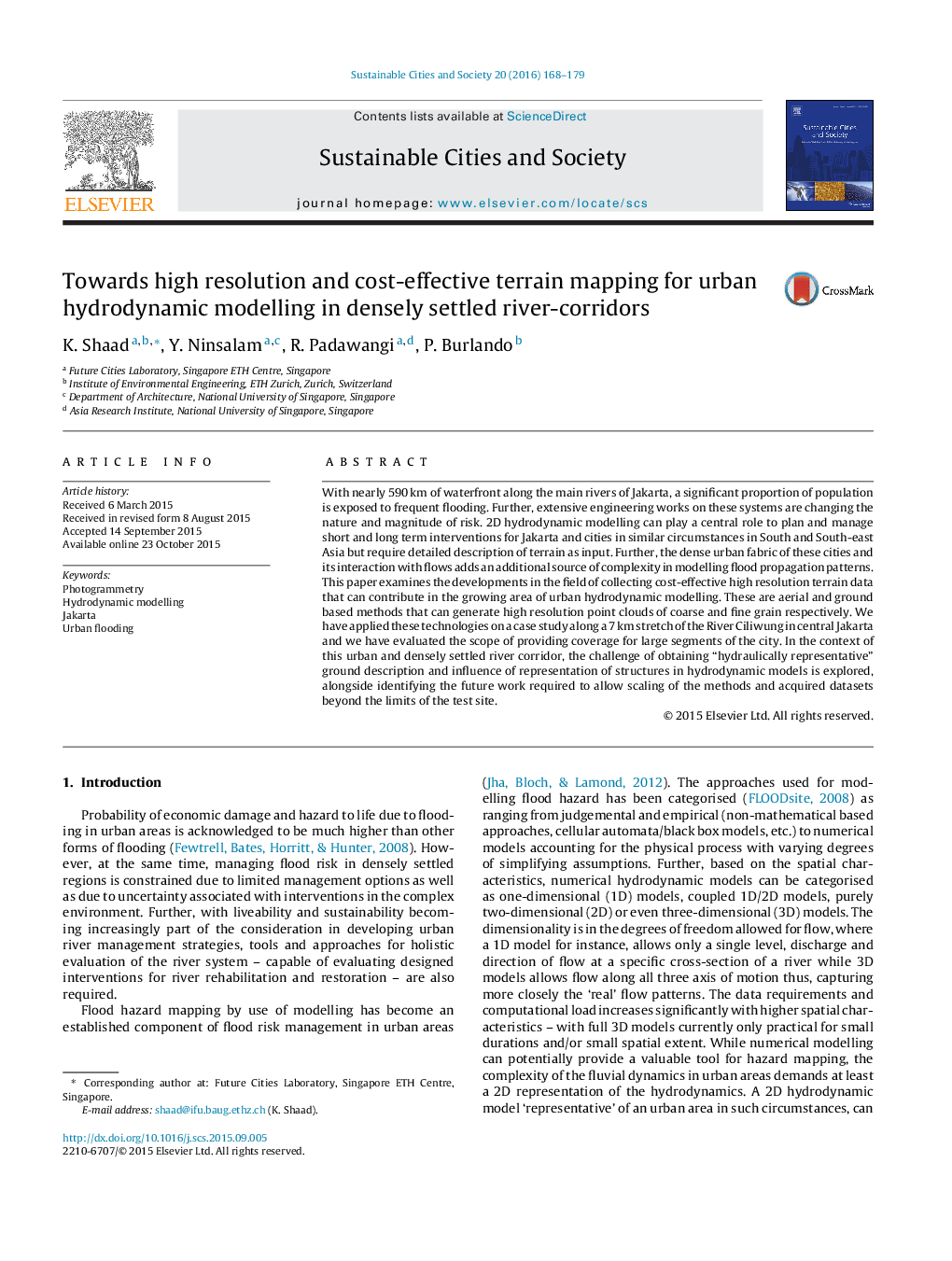| Article ID | Journal | Published Year | Pages | File Type |
|---|---|---|---|---|
| 308084 | Sustainable Cities and Society | 2016 | 12 Pages |
With nearly 590 km of waterfront along the main rivers of Jakarta, a significant proportion of population is exposed to frequent flooding. Further, extensive engineering works on these systems are changing the nature and magnitude of risk. 2D hydrodynamic modelling can play a central role to plan and manage short and long term interventions for Jakarta and cities in similar circumstances in South and South-east Asia but require detailed description of terrain as input. Further, the dense urban fabric of these cities and its interaction with flows adds an additional source of complexity in modelling flood propagation patterns. This paper examines the developments in the field of collecting cost-effective high resolution terrain data that can contribute in the growing area of urban hydrodynamic modelling. These are aerial and ground based methods that can generate high resolution point clouds of coarse and fine grain respectively. We have applied these technologies on a case study along a 7 km stretch of the River Ciliwung in central Jakarta and we have evaluated the scope of providing coverage for large segments of the city. In the context of this urban and densely settled river corridor, the challenge of obtaining “hydraulically representative” ground description and influence of representation of structures in hydrodynamic models is explored, alongside identifying the future work required to allow scaling of the methods and acquired datasets beyond the limits of the test site.
